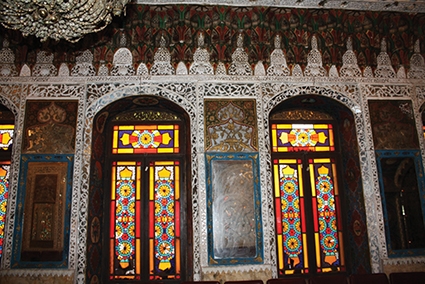Historic Tbilisi Academy of Arts Building Being Brought Back to Life
The Tbilisi Academy of Arts is one of those hidden jewels of the capital of Georgia that the country can be proud of. The old building of the academy, constructed in the 1850s, was the first Art Academy in the Caucasus and the cultural hub of the region. The building, decorated with intricate stained-glass windows and lined with enamel and mirror mosaics, represents a unique example of a historic and cultural landmark, that has given birth to generations of great Georgian artists who have contributed to the development of Georgian culture.
You can find it at 22 Griboedovi Street, the synthesis of European and Eastern architecture mimicking Tbilisi’s cosmopolitan nature. The building has endured more than a century, experiencing many hardships, including Soviet terror, to survive to today. Yet over the last decades, the crumbling building has been on the verge of destruction, alarming both the academy’s personnel and art enthusiasts who know its value. In 2015, the Apolon Kutateladze Academy of Arts was selected for a rehabilitation project by the Ministry of Culture and Sport of Georgia. The long-awaited restoration and maintenance works were launched the same year, with the professors and students of the academy and graduates getting readily involved. The renovation works are ongoing and are expected to be finished by the end of 2018.
On April 16, Mikheil Giorgadze, the Minister of Culture and Sport of Georgia, and Mariam Jashi, the Chairman of the Education, Science and Culture Committee, inspected the large-scale rehabilitation works at the Academy of Arts and held a meeting with the students. At this stage, the construction maintenance works have been completed, the roof has been replaced, and the western and northern facades have been repaired. Currently, restoration and conservation works are in progress in the eastern-style halls and in the yard. The entire building has also been upgraded and adjusted to be accessible to people with disabilities.
The project aims at reviving and preserving the authentic appearance of the historic building as much as possible, maintaining and strengthening the foundation as well as repairing the interior. Additionally, after the completion, special spaces for workshops and for storing educational resources and museum funds will be arranged. In order not to disrupt the students during the renovation, studies were moved to the renovated Academy-owned building at 34 Kipshidze Street.
The main features of the Academy are the halls adorned with mirrors, designed by specially invited Khanjar artisans from Iran when the building was originally constructed. Art experts compare these halls to the interiors of eastern-style palaces of Iran or the famous Golestan Palace, one of the oldest historic monuments in the city of Tehran, and of world heritage status. Built over 200 years of Qajar rulership, between 1925 and 1945 a large portion of the buildings of the Golstan Palace complex were destroyed on the orders of Reza Shah. As such, Georgia’s Academy of Arts possesses precious examples of royal decoration that no longer exist.
The Tbilisi Academy of Arts started out as a school of arts for beginners. In 1901, an Arts Middle School was added under the patronage of Saint Petersburg’s Imperial School of Arts. By 1921, there were already several private art schools in Tbilisi and other cities of Georgia, soon followed by a number of art studios and workshops. At the beginning of 1922, Mose Toidze, celebrated Georgian artist and professor, established the Public Art Studio. On March 8 1922, the first Academy of Arts in the entire Caucasus was established, among the three main academies in Leningrad (Saint Petersburg), Riga and Tbilisi that functioned in the Soviet Union. During the first year, only four faculties were available: painting, sculpture, graphics and architecture. Later, it expanded and in 1927 the Ceramics Department was added. Academy counted over 156 students, in 1946-1947 the number increased to 270, in 1973, 848 students enrolled and 204 professors worked at the Academy. Today, there are 1380 students and 370 professors.
Lika Chigladze











